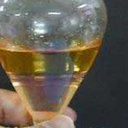Polish
Albanian
Arabic
Armenian
Azerbaijani
Belarusian
Bengali
Bosnian
Catalan
Czech
Danish
Deutsch
Dutch
English
Estonian
Finnish
Français
Greek
Haitian Creole
Hebrew
Hindi
Hungarian
Icelandic
Indonesian
Irish
Italian
Japanese
Korean
Latvian
Lithuanian
Macedonian
Mongolian
Norwegian
Persian
Polish
Portuguese
Romanian
Russian
Serbian
Slovak
Slovenian
Spanish
Swahili
Swedish
Turkish
Ukrainian
Vietnamese
Български
中文(简体)
中文(繁體)
Nutrition and Metabolism 2019
Tylko zarejestrowani użytkownicy mogą tłumaczyć artykuły
Zaloguj się Zarejestruj się
Link zostanie zapisany w schowku
Methods
A total of 1024 patients with type 2 diabetes were screened. To match clinical parameters between case and control subjects, patients with PDR (PDR, n = 21) or those with a duration of diabetes of ≥10 years but without diabetic retinopathy (NDR, n = 21) were assigned to the present case-control study. Distinct metabolite profiles of serum were examined using liquid chromatography-mass spectrometry (LC-MS).Results
The distinct metabolites between PDR and NDR groups were significantly enriched in 9 KEGG pathways (P < 0.05, impact > 0.1), namely, alanine, aspartate and glutamate metabolism, caffeine metabolism, beta-alanine metabolism, purine metabolism, cysteine and methionine metabolism, sulfur metabolism, sphingosine metabolism, and arginine and proline metabolism. A total of 63 altered metabolites played important roles in these pathways. Finally, 4 metabolites were selected as candidate biomarkers for PDR, namely, fumaric acid, uridine, acetic acid, and cytidine. The area under the curve for these biomarkers were 0.96, 0.95, 1.0, and 0.95, respectively.Najbardziej kompletna baza danych ziół leczniczych poparta naukowo
- Działa w 55 językach
- Ziołowe leki poparte nauką
- Rozpoznawanie ziół na podstawie obrazu
- Interaktywna mapa GPS - oznacz zioła na miejscu (wkrótce)
- Przeczytaj publikacje naukowe związane z Twoim wyszukiwaniem
- Szukaj ziół leczniczych po ich działaniu
- Uporządkuj swoje zainteresowania i bądź na bieżąco z nowościami, badaniami klinicznymi i patentami
Wpisz objaw lub chorobę i przeczytaj o ziołach, które mogą pomóc, wpisz zioło i zobacz choroby i objawy, na które są stosowane.
* Wszystkie informacje oparte są na opublikowanych badaniach naukowych


